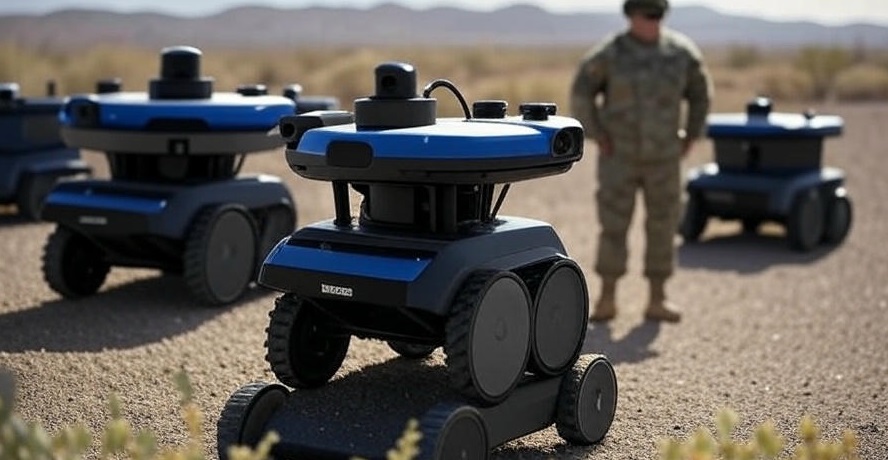
On May 19, 2025, the U.S. Department of Defense announced successful field tests of next-generation autonomous ground robots powered by artificial intelligence. Conducted in Arizona, the drills are part of the Pentagon’s vision for a hybrid human-machine military by 2030.
Equipped with LIDAR, infrared vision, acoustic sensors, and optical recognition, the robots were deployed for autonomous operations: reconnaissance, supply delivery, evacuation, and combat support.
During testing:
- The AI independently identified threats, adjusted routes, and made tactical decisions in real time.
- Robots synchronized with UAVs and ground forces, executing maneuvers with high coordination.
- Reaction time averaged under 1.3 seconds, far exceeding human response.
The key breakthrough is an adaptive learning AI capable of real-time scenario learning without external programming. A critical safeguard is a “kill switch” override, giving commanders full control when needed.
Defense experts welcomed the milestone but urged regulatory clarity, especially concerning rules of engagement and lethal autonomy. The Pentagon affirmed that no AI system would make kill decisions without human authorization.
Deployment of such systems on NATO and U.S. bases is under review. Future use may include non-combat scenarios: mine clearance, disaster relief, and medical logistics.
This marks a paradigm shift — AI is not replacing soldiers, but augmenting their capabilities for faster, safer, and smarter warfare.
